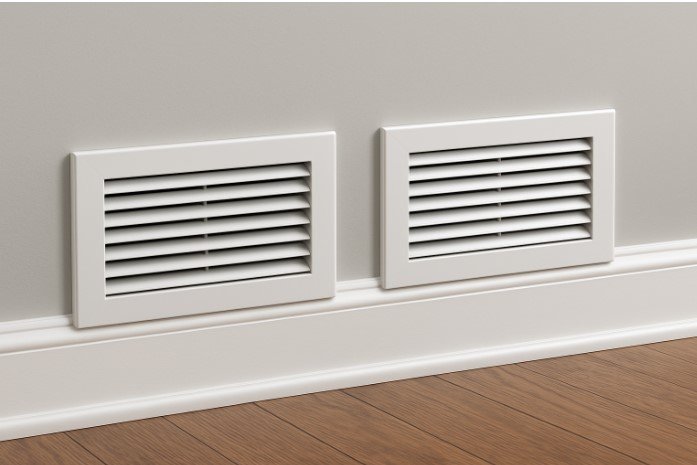Baseboard vents in your house provide for its heating and cooling, but few homeowners pay them little heed until they fail. Floor air vents distribute air in your rooms and influence how your home appears. The selection of baseboard vents you use significantly influences your home’s energy consumption, interior air quality, as well as your comfort.
It not only circulates air but also helps make your home comfortable. Below are the key factors you should consider when selecting the best baseboard vents you should use in your home.
Understanding Various Types of Baseboard Vents
Metal Baseboard Vents
Metal vents are typically constructed of aluminum or steel. They are durable and provide good airflow. The steel vents are resilient and can withstand much foot traffic and are perfect for high-traffic areas such as living rooms or hallways. The aluminum vents will not rust and perform nicely in moist spaces such as basements or bathrooms.
These typically are slatted, with slats you can alter to direct the airflow precisely, making it simpler to warm individual rooms. The clean appearance suits both new and old decorating schemes.
Wood Baseboard Vents
Wood baseboard vents cause each room to appear cheerful and pleasant. Individuals who are more appearance-oriented than functionality-oriented prefer them. It is possible to stain or paint some wood vents to blend with your baseboards, so everything appears tidy and uniform.
But wood requires more attention than the other metals and can warp in very damp locations. These vents function well when the conditions are moderated and keep the moisture level constant.
Plastic Baseboard Vents
Plastic vents are the most inexpensive and will work in most situations. New plastic vents are best to purchase because they are prettier and more durable than used ones. The plastic vents will not be ruined by moisture and clean easily, so they’re ideal for areas where spills occur or with high humidity levels.
Plastic vents are less sturdy than metal vents, but they are useful when you rent your home or use it temporarily when you lack funds.
What to Consider When Selecting Baseboard Vents
Size and Airflow Requirements
Having the correct size keeps air flowing freely in your home. Take precise measurements of your existing vents, including the duct opening and overall size. Small vents restrict airflow, forcing your HVAC system to work harder and pushing up your energy cost. Large vents can be aesthetically unpleasing and lead to unbalanced airflow.
Consider what your bedroom requires. Large, elaborate rooms typically require vents that can handle more air, but tiny rooms require the air to be better controlled.
Merging Designs
Your baseboard vents should be in harmony with your room’s appearance, but not distract from it. Consider the room’s color, building style, and other accessories when you make your selection. Elegant vents are suitable for old-fashioned rooms, but minimalist style suits new-age rooms.
Care and Durability
Consider the vent over an extended period when making choices among various products. High-traffic zones require ducts with easy regular cleaning and occasional impacts. Consider how easy it’s going to be to remove each kind for repair or cleaning.
Aluminum vents typically require minimal attention, only an occasional dusting. Wood vents, however, will sometimes need refinishing in order to continue looking their best.
Selecting the Best Option for Your Home
Selecting the best baseboard vents involves considering how they function, how they appear, and how much they cost. Metal vents typically offer the highest value when baseboards are utilized frequently, but if appearance is the greatest concern, wood vents are ideal. Plastic vents are ideal when budget is extremely crucial.
Consider what each room requires. Consider moisture, how you use the room, and what you want your designs to look like. Quality baseboard vents will keep your home in great shape for years to come and keep it comfortable as well as pleasant looking.

